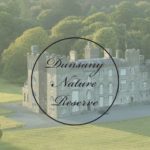Dunsany Nature Reserve
The Dunsany Estate, which dates back to the 11th century and is located around 35 kilometres northwest of Dublin, covers 1600 acres (650 hectares) – of this about 750 acres (300 hectares) is now being rewilded as the reserve. There is also around 550 acres (220 hectares) of forest, and there are several springs and streams flowing through marshy areas. The land not forested or being rewilded is used to grow crops. The soil here is very fertile, so the income from agriculture is enough to support the estate, along with the income from the film production facilities based here. There’s a lot of wildlife, from foxes, badgers and otters to owls, red deer and various birds of prey. The estate is home to a film production company called Dunsany Productions, every film that comes through the company has a mandatory donation of a tree to be planted on the estate. In 2014, all animal agriculture was abandoned and all fields and forests that once contained farm animals were left to rewild.

The Dunsany Estate, which dates back to the 11th century and is located around 35 kilometres northwest of Dublin, covers 1600 acres (650 hectares) – of this about 750 acres (300 hectares) is now being rewilded as the reserve. There is also around 550 acres (220 hectares) of forest, and there are several springs and streams flowing through marshy areas. The land not forested or being rewilded is used to grow crops. The soil here is very fertile, so the income from agriculture is enough to support the estate, along with the income from the film production facilities based here. There’s a lot of wildlife, from foxes, badgers and otters to owls, red deer and various birds of prey. The estate is home to a film production company called Dunsany Productions, every film that comes through the company has a mandatory donation of a tree to be planted on the estate. In 2014, all animal agriculture was abandoned and all fields and forests that once contained farm animals were left to rewild.


